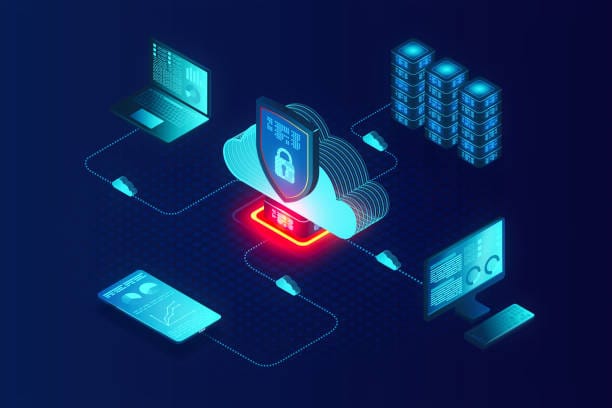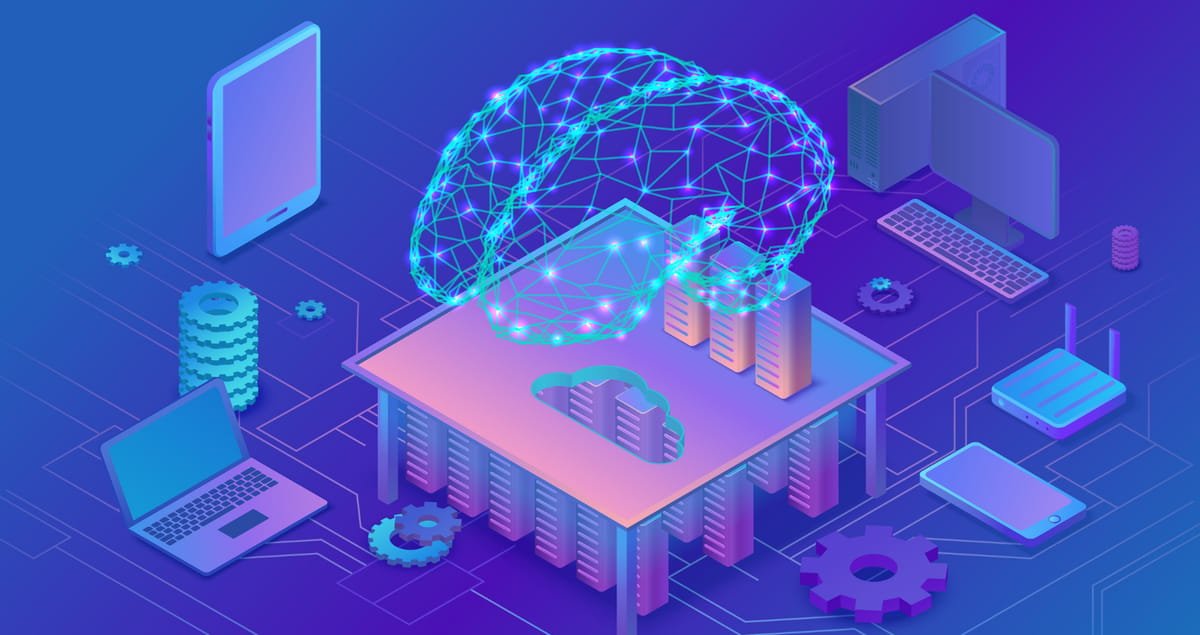In the early days of computing, the “perimeter” was simple. An organization’s network lived behind a firewall, guarded like a medieval castle surrounded by high walls and a deep moat. Devices rarely left the safety of the office, and the notion of carrying a powerful computer in your pocket was the stuff of science fiction.
That world is gone. Today, the average employee uses multiple devices — a laptop for work, a smartphone for constant connectivity, perhaps a tablet for presentations, and increasingly, wearable devices or IoT-enabled tools. Each of these devices, whether in the office, at home, or in a café halfway across the globe, connects to corporate resources and the broader internet. The lines between “inside” and “outside” have blurred into nonexistence.
The modern perimeter is not a firewall — it is everywhere. Every endpoint is a front line. And that makes endpoint security not just an IT concern, but a cornerstone of organizational survival.
What Endpoint Security Really Means
At its simplest, an endpoint is any device that connects to a network. In the traditional sense, that meant desktop computers or office workstations. Today, the definition is far broader:
A laptop is an endpoint.
A smartphone is an endpoint.
A smartwatch is an endpoint.
A connected medical device in a hospital is an endpoint.
A sensor in a factory linked to the industrial internet is an endpoint.
Each endpoint is both a valuable tool and a potential vulnerability. Endpoint security, then, is the set of strategies, technologies, and practices designed to protect these devices from malicious access, misuse, or compromise.
But this is more than installing antivirus software. Modern endpoint security must account for cloud integration, remote work, zero-trust architecture, and the dizzying diversity of devices — especially the explosion of Internet of Things (IoT) systems. It must deal with threats that are stealthy, adaptive, and often state-sponsored. It must protect not just data, but human lives in contexts like healthcare and critical infrastructure.
Why Endpoints Have Become Prime Targets
If data is the currency of the digital age, endpoints are the mint. They are where data is created, accessed, and often stored — and that makes them irresistible to attackers.
Unlike a hardened corporate server room, endpoints roam the world. A laptop might connect to a secure office network in the morning, a home Wi-Fi in the evening, and an unsecured airport hotspot the next day. A smartphone might contain both corporate email and personal social media apps, bridging two worlds that attackers are all too happy to exploit.
The sheer variety of endpoints multiplies the complexity. Laptops run different operating systems — Windows, macOS, Linux — each with its own vulnerabilities. Mobile devices run Android or iOS, each with varying patch cycles and application ecosystems. IoT devices range from smart thermostats to industrial robots, often running minimal security software or none at all.
And here lies a painful truth: many IoT devices are designed with functionality in mind, not security. A connected security camera might provide crystal-clear video feeds, yet run outdated firmware that can be hijacked in seconds by a skilled attacker.
The result is a vast and expanding attack surface — one that no traditional perimeter can contain.
The Evolution of Threats
Cyberattacks against endpoints are no longer crude, random viruses. They are precise, multi-stage campaigns. Modern attackers are patient hunters. They infiltrate quietly, often through phishing or malicious downloads, and once inside, they move laterally — exploring the network, escalating privileges, exfiltrating data.
Malware itself has evolved into specialized categories: ransomware that encrypts entire drives and demands payment; spyware that silently records keystrokes and captures screenshots; fileless attacks that live in memory, leaving no trace on the hard drive; and advanced persistent threats (APTs) that can hide undetected for months.
Mobile devices face their own breed of threats: malicious apps that masquerade as games or utilities, vulnerabilities in messaging platforms, and exploits that can compromise the baseband processor itself — the component that handles cellular communications.
IoT devices, with their minimal processing power and weak security controls, are particularly attractive to attackers. Compromised IoT devices have been harnessed into massive botnets, capable of launching distributed denial-of-service (DDoS) attacks that can cripple websites and even sections of the internet.
The Human Factor
No discussion of endpoint security is complete without acknowledging the human element. Technology may be the battlefield, but humans are often the gateway.
An employee might plug a personal USB drive into a corporate laptop without realizing it contains malware. A busy executive might approve a fraudulent login request on their phone, thinking it’s a legitimate prompt. A technician might connect an IoT device to the network without changing the default password — the digital equivalent of leaving the key in the lock.
Attackers know this. Social engineering — manipulating people into breaking security procedures — remains one of the most effective tools in a hacker’s arsenal. And because endpoints are personal devices, they become natural points of contact for these manipulations.
Building the Modern Endpoint Defense
Effective endpoint security requires a layered, adaptive approach. It begins with visibility — knowing exactly what devices are connected, where they are, and what they are doing. This is no small task in a global enterprise with thousands of employees and tens of thousands of endpoints.
From there, security tools must be deployed at the device level: endpoint detection and response (EDR) systems that monitor for suspicious behavior, advanced antivirus engines that can detect both known and unknown malware, encryption tools that protect data at rest and in motion, and application control systems that prevent unauthorized software from running.
But technology alone is not enough. Policies must define how devices can be used, what data can be stored locally, and how often systems must be patched. Training must empower users to recognize phishing attempts, avoid risky behavior, and understand the stakes of poor security practices.
In IoT environments, the challenge deepens. Devices may have limited capacity for running security agents, meaning protection must come from network segmentation, strict access controls, and regular firmware updates.
The Role of Zero Trust in Endpoint Security
The traditional security model assumed that once inside the network, a device or user could be trusted. Zero trust throws that assumption away. In a zero-trust framework, no device, user, or application is trusted by default — regardless of whether it is inside or outside the network perimeter.
Every access request must be verified. Every device must be authenticated. Behavior must be continuously monitored for anomalies. For endpoints, this means enforcing strong identity verification, assessing device health before granting access, and applying the principle of least privilege — giving devices only the access they truly need.
This philosophy is particularly crucial in a world where remote work is standard and devices connect from coffee shops, airports, and home networks.
The Challenge of Mobile Device Security
Mobile devices are the most personal endpoints we own. They carry not just corporate data, but our private conversations, location history, financial apps, and even biometric identifiers. This blending of personal and professional makes securing them particularly tricky.
Mobile device management (MDM) and enterprise mobility management (EMM) solutions give organizations tools to enforce security policies on smartphones and tablets. These can require devices to use encryption, enforce screen locks, separate work and personal data, and remotely wipe lost or stolen devices.
However, employees may resist these controls, fearing corporate intrusion into their private lives. Striking the right balance between security and privacy is an ongoing negotiation between organizations and their people.
IoT: The Security Frontier
The Internet of Things represents both the next wave of technological innovation and the next great security challenge. From smart home appliances to autonomous vehicles, from wearable health trackers to industrial sensors, IoT devices are proliferating at an astonishing pace.
Unfortunately, many of these devices are built for cost efficiency and rapid deployment, not robust security. They may ship with weak default credentials, rarely receive updates, and run proprietary operating systems that make patching difficult.
A compromised IoT device may not seem dangerous on its own — what harm can a smart light bulb do? — but when harnessed into a botnet or used as a pivot point into more sensitive systems, it can become part of a much larger threat.
Endpoint Security as a Culture, Not a Product
Perhaps the most important truth about endpoint security is that it is not a product you can buy and be done with. It is a culture. It is a mindset that permeates an organization, from the executive suite to the newest intern.
It is about teaching people that every device they touch is part of a shared responsibility. It is about creating systems that adapt as the threat landscape evolves. It is about building resilience so that when a breach occurs — and breaches will occur — the damage can be contained and operations can recover quickly.
The Road Ahead
Looking to the future, endpoint security will only grow more complex. Artificial intelligence will play a larger role, both for defenders and attackers. Quantum computing may one day break current encryption methods, forcing a new generation of cryptographic solutions.
The number of endpoints will continue to skyrocket as 5G and beyond connect more devices in more places than ever before. The attack surface will expand, but so too will the tools available to defend it.
The organizations that succeed will be those that treat endpoint security not as an afterthought, but as a strategic pillar — those that invest in technology, training, and culture equally.
Because in the hyperconnected world we inhabit, every laptop, every mobile device, every IoT sensor is not just a tool. It is a potential target. And protecting them means protecting everything they touch — our data, our systems, and ultimately, our trust in the digital world itself.






